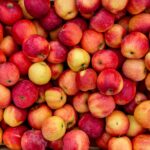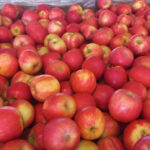Chile to join 'big leagues' with own fruit varieties
Despite its status as a leading player in the global fruit industry, Chile has lagged behind in developing its own genetic varieties. The Australis Breeding Programme aims to change all that and will help Chile join the ‘big leagues’ of farming technology, Agricultural Minister José Antonio Galilea tells Freshfruitportal.com.
Fruit industry leaders and scientists met at Sheraton Santiago Hotel yesterday to discuss the program, which has been developed by the Andes New Varieties Association (ANA) Chile and the University of Chile, with support from biofruit innovation consortium CORFO.
The idea is that Chile will develop its own fruit breeding programs to suit its climate, with the end goal of patented products that could be sold on the international market.
For around 10 years the focus has been on developing stone fruit, with varieties now ready for local markets, before potential export later on.
“Fruit production until now has been sustained by the use of genetic material coming from countries with years of investigation and development, which are now commercial varieties and are available worldwide. Around 98% of the fruit varieties Chile sells come from these breeding programs abroad,” says Galilea.
“I believe that if Chile has taken the challenge to convert itself into an agricultural and forestry power, these coming technological steps are inevitable – necessarily, you need to reach the big leagues with your own technology and in this case specific genetics, and again I think this effort is aimed in that direction.
“For a country like Chile that already has enough prestige for the quality of its fruit in distinct markets, it shouldn’t be too laborious to introduce new varieties, because foreign customers are already accustomed to Chilean fruit.”
Protecting developers
Galilea is not able to give a potential export timeline for new varieties, but based on Chile’s export success in nectarines, grapes, apples and a variety of other fruits, the government has recognized the importance of encouraging the development of new products.
“We have a discussion in Congress today about a bill that seeks to protect the rights of developers of new plant products,” he says.
“It is a bill that should not only allow for more foreign investment in the technological area and the generation of new varieties, but will also stimulate our own research, because as long as the rights of those who have success in their investigations are safeguarded, then there is a stimulus for scientists to venture with more decisions in farming.
“I think rules like that put us in line with most developed countries in the world in terms of rights protection, which should be a very powerful element in stimulating new varieties in Chile.”
Opportunities in Asia
In the short-term while many of these varieties continue development, the Chilean government and fruit businesses are actively seeking new markets.
Galilea expresses delight at a recent agreement with China to speed-up entry of Chilean prunes to the Asian countries, through a new protocol system.
Chile is the world’s second-largest producer of prunes, or dried plums, exporting to more than 70 countries with Mexico, Brazil, Germany, Poland and Italy as major destinations, according to the Ministry of Agriculture (MINAG).
“Every day we have a new conquest of market openings in different countries for different products. Without going any further, I hope we will soon resolve the bottlenecks that remain with blueberries in China,” he says.
“We are on the verge of completing a negotiation that has been dragging on too long, has had its ups and downs, and today we are at the door of the oven, which will be a tremendous success for Chilean blueberry producers and exporters.
He says the recent deal with exporting prunes to China is ‘very rewarding’, and while China only imports around 6,000 metric tons (MT) of prunes annually, the future prospects are bright.
"The growth in income per capita and the changes in consumer habits in that country, means demand for products like dried plums will increase steadily," he said.
"If China has the opportunity to import dried plums in the counter-season of northern hemisphere countries, Chile can offer a product with less storage time, whcih constitutes an opportunity and an advantage in terms of competitiveness."
Using data from ProChile, a Ministry of Agriculture (MINAG) release said the country exported 68,854MT worth of prunes with a value of US$128 million in 2010, while annual production is expected to rise to 100,000MT by 2015.
The release also pointed out China's prune imports grew by 85% in 2009-10, with the U.S. as its major supplier and 98% of imports bound for Taiwan. The U.S. is the world's largest prune exporter.
Source: www.freshfruitportal.com
















































